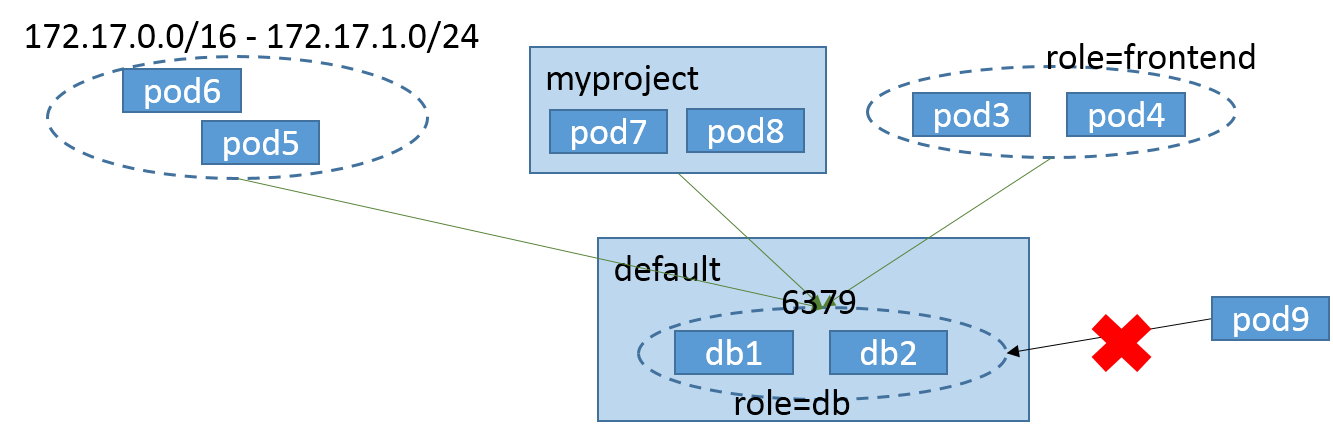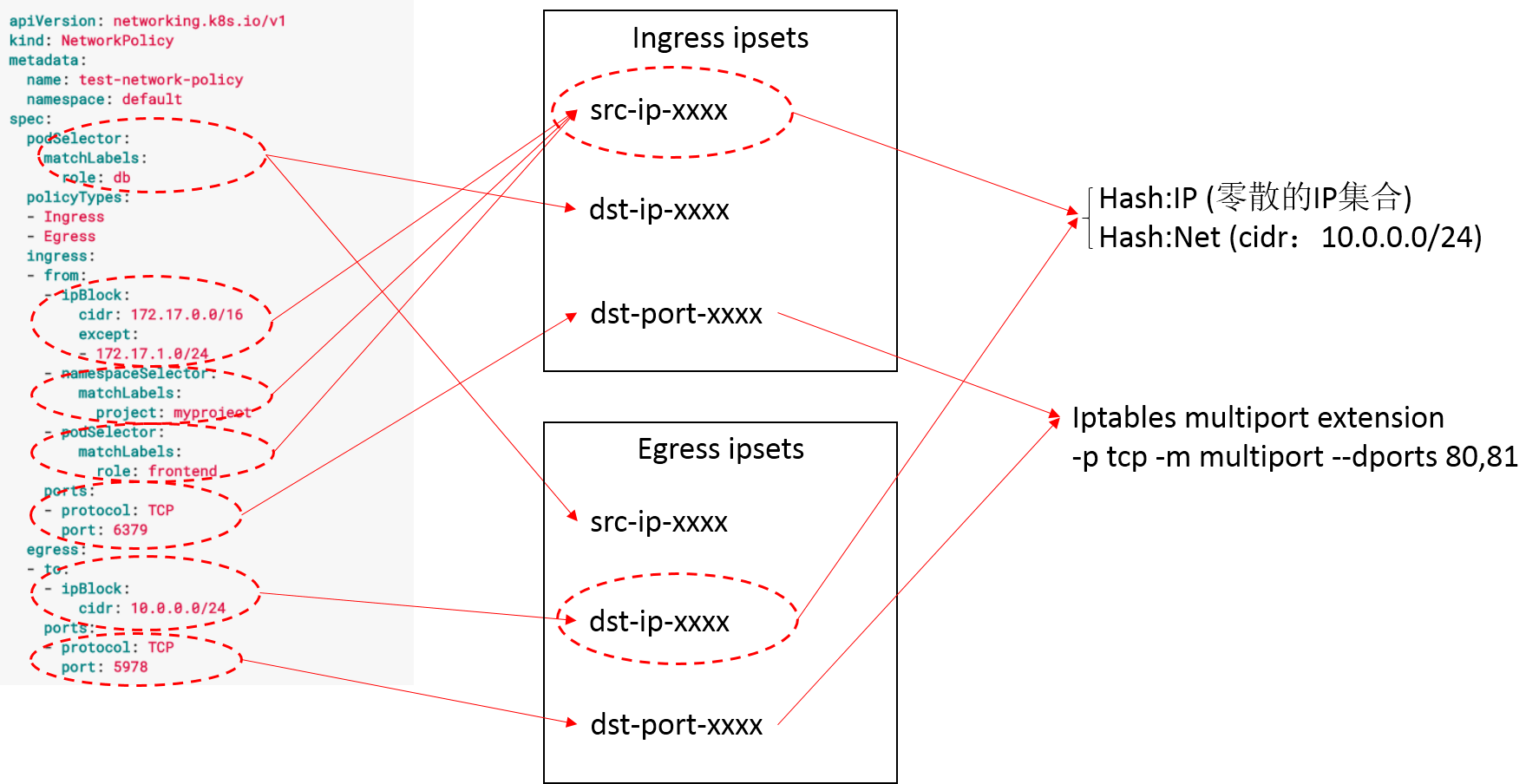Kubernetes network policy
A policy example yaml from Kubernetes Network Policies.
apiVersion: networking.k8s.io/v1
kind: NetworkPolicy
metadata:
name: test-network-policy
namespace: default
spec:
podSelector:
matchLabels:
role: db
policyTypes:
- Ingress
- Egress
ingress:
- from:
- ipBlock:
cidr: 172.17.0.0/16
except:
- 172.17.1.0/24
- namespaceSelector:
matchLabels:
project: myproject
- podSelector:
matchLabels:
role: frontend
ports:
- protocol: TCP
port: 6379
egress:
- to:
- ipBlock:
cidr: 10.0.0.0/24
ports:
- protocol: TCP
port: 5978
I made a picture to translate the below code.

As the picture says, only three ingress traffic can access role:db pods’ 6379/TCP port in default namespace. The picture doesn’t contain egress policy part which follows the same rule.
Design
Kubernetes network policy is superset of multi-tenent network which is a namespace level policy, because it accounts to pod level. Based on this, it may be impossible to implement it by network protocols such as VXLAN.
Iptables is suitable for filtering packets based on protocols, ips and ports. But it has a fatal weakness that kernel travel accross chain rules one by one to determine if packets match them. Consider the selected pods’ ips by namespaceSelector and podSelector in ingress.from, they may be a sparse set, if using iptables, we have to write many rules which is quite ineffient. This brings ipset which uses hash map or bloom filter to match ips or ports. So the basic design is using iptables along with ipset.

ipsethash:ipis used to matchnamespaceSelectorandpodSelectoripsethash:netis used to matchipBlock,ipsetsupports nomatch option to except serveral cases- For
portspart, we can make same protcol ports a single iptables rule by using multiport iptables extension to match them
The ingress rule may be as follows is there is no bridge in your cni network

and egress rule may be

Implementation tips
You must be careful on creating or deleting iptables rules and ipsets.
- delete iptables rules first than ipsets if they reference some later ones
- delete iptables rules which referencing chain B first before deleting chain B
- use iptables-save and iptables-restore to do batch inserting or deleting whenever possible